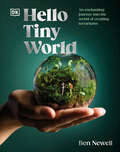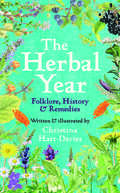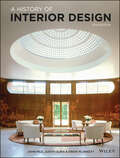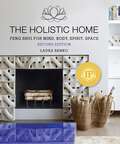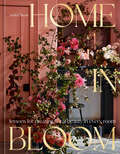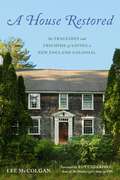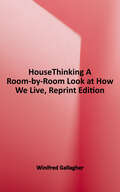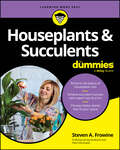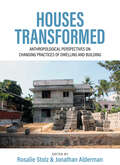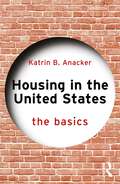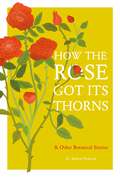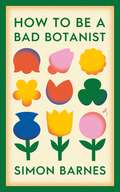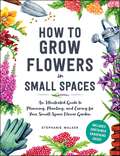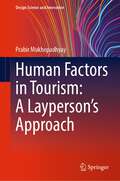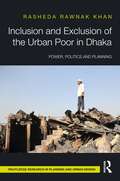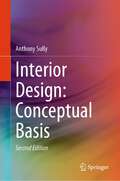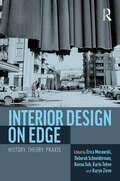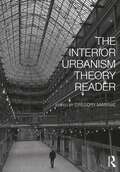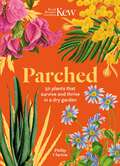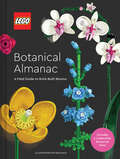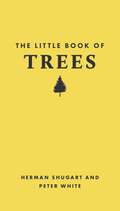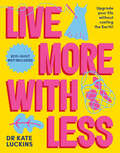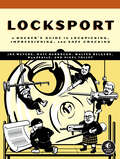- Table View
- List View
Hello Tiny World: An Enchanting Journey into the World of Creating Terrariums
by Ben NewellA friendly journey through the captivating world of terrariums—from the creator of one of the most famous terrariums ever.Hello Tiny World will inspire a wide readership to discover the tiny wonder of a different kind of container gardening in their own homes—no outdoor space needed. How can terrariums teach us about the environment? Can working with plants improve our mental health and well-being? How do we learn to express ourselves and our creativity through these wondrous mini ecosystems?Hello Tiny World is Ben Newell's exploration of these questions as he weaves in his own personal experiences, alongside practical projects with photographed step-by-steps allowing readers to delve into the detail of how to make various terrariums—from beginner terrariums and terrariums on a budget, to more creative and ambitious projects. Those curious to learn about ecology and living sustainably as well as those interested in how plants can help our well-being, mindfulness, and creativity will all be served by this book, alongside horticulturalists who have yet to discover terrariums.
The Herbal Year: Folklore, History and Remedies
by Christina Hart-DaviesAn enchanting, beautifully illustrated guide to seasonal plants—showing the long history of herbal remedies and their uses today“[A] charming almanac. . . . Hart-Davies, a writer and botanical illustrator whose watercolors enliven her book, . . . offers a lively combination of folk history and modern science; they overlap in intriguing ways.”—Priscilla M. Jensen, Wall Street Journal From sweet violets in spring to rosemary in winter, via marigolds, sage, elderberries, and hops, every season has its own bounty of herbs and plants. Christina Hart-Davies presents a delightful guide to common plants as they appear throughout the year. Drawing on writers, storytellers, and poets from across the centuries, she examines the long history of herbal remedies. She shows how plants have been used for healing and unearths the stories and beliefs that surround them—including simple recipes for use at home. Fully illustrated with exquisitely detailed watercolours, this is an inspirational guide to exploring our age-old relationship with plants. Readers will discover the hidden secrets of the plants that surround us and, through this, will be able to reconnect with our place in nature. We have relied on plants throughout our history. We still do, and, with luck, we always will.
A History of Interior Design
by John Pile Judith Gura Drew PlunkettA History of Interior Design tells the story of 6,000 years of domestic and public space. It’s an essential resource for students, professionals, and anyone interested in interior design, the decorative arts, architecture, and art history. It explores a broad range of styles and movements, weaving together a fascinating narrative from cave dwellings and temple architecture, through Gothic cathedrals and Islamic palaces, to modern skyscrapers and the retail spaces of the 21st-century. This fully updated fifth edition includes: More on the contributions of women designers and architects Additional coverage of furniture, product design, and decoration Numerous new examples of diverse modern styles from around the world Over 700 images, more than 300 of which are new or color replacements for black and white photos An extra final chapter focusing on the influence of the latest technology and current thinking on the importance of conservation and ethical sourcing
The Holistic Home: Feng Shui for Mind, Body, Spirit, Space
by Laura BenkoRule the world and take control of your emotional and mental health from where you sit, stand, and sleep. The Holistic Home is based on an original lifestyle concept focused on creating a dynamic, healthy, and thoughtful space within yourself and your home by combining three planes of action—mind, body, and spirit—that result in profound change. The condition of the mind affects the psychology of how you dwell: subconscious influences, decorating with intention, and allowing your emotional issues and challenges to manifest in your space. The physical aspects of your design space, such as furniture positioning, design elements, sustainability, wellness, and organization, are representative of your relationship with your body. And finally, the spirit refers to all the invisible energies within you and your home—feng shui, atmosphere, and the soul of your home. Years ago, author and holistic feng shui expert Laura Benko was diagnosed with a rare cancer. Around that time, a book serendipitously fell on her head. She took this as a much-needed sign to devote the next decade of her life to research and hundreds of transformative holistic design consultations. Her clients&’ real-life, inspiring stories, along with specific actions and tips, have become the foundation for The Holistic Home. Chapter by chapter, you&’ll learn how to holistically tackle it all—relationships, clutter, health, communities, inner balance, and more—by looking within your immediate environment to make direct connections in your life.
Home in Bloom: Lessons for Creating Floral Beauty in Every Room
by Ariella ChezarA vivid, inspiring look at the role of flowers and plants in interior design through the stunning, wild work of Ariella Chezar.Home in Bloom celebrates the seamless integration of architecture, light, and natural landscapes into Ariella Chezar's floral designs. Her talent for layering colors and combining improbable wild elements results in arrangements that are as gorgeous as they are dynamic. With each page, Ariella invites us to revel in the inherent drama of nature, encouraging us to infuse our living spaces with beauty and abundance, while fundamentally altering a room's energy through the transformative power of flowers.Organized into chapters that celebrate every room in the home—Welcome, Nourish, Celebrate, Pause, and Wilding—Home in Bloom takes us on a journey through spaces filled with incredible blooms that spark color and light. The arrangements in each chapter are accompanied by detailed captions that inspire us to walk outside and bring the wilds of nature into our own spaces. Filled with hundreds of gorgeous photographs of inviting spaces, this interior design book is full of unique inspiration for any flower lover.
A House Restored: The Tragedies and Triumphs of Saving a New England Colonial
by Lee McColganShop Class as Soulcraft meets A Place of My Own in this lyrical meditation of a woodworker steadfastly repairing a historic home. Old houses share their secrets only if they survive. Trading the corporate ladder for a stepladder, Lee McColgan commits to preserving the ramshackle Loring House, built in 1702, using period materials and methods and on a holiday deadline. But his enchantment withers as he discovers the massive repairs it needs. A small kitchen fix reveals that the structure’s rotten frame could collapse at any moment. In a bathroom, mold appears and spreads. He fights deteriorating bricks, frozen pipes, shattered windows, a punctured foundation, and even an airborne chimney cap while learning from a diverse cast of preservationists, including a master mason named Irons, a stone whisperer, and the Window Witch. But can he meet his deadline before family and friends arrive, or will it all come crashing down? McColgan’s journey expertly examines our relationship to history through the homes we inhabit, beautifully articulating the philosophy of preserving the past to find purpose for the future.
House Thinking: A Room-by-Room Look at How We Live
by Winifred Gallagher“A fascinating book that investigates and explains the emotional impact our homes have on our lives. House Thinking . . . guides the way for us to live out our most creative selves at home.” —Wendy Goodman, interior design editor, New York magazine IKEA, Ethan Allen and HGTV may have plenty to say about making a home look right, but what makes a home feel right? In House Thinking, journalist and cultural critic Winifred Gallagher takes the reader on a psychological tour of the American home. By drawing on the latest research in behavioral science, an overview of cultural history, and interviews with leading architects and designers, she shows us not only how our homes reflect who we are but also how they influence our thoughts, feelings, and actions. How does your entryway prime you for experiencing your home? What makes a bedroom a sensual oasis? How can your bathroom exacerbate your worst fears? House Thinking addresses provocative questions like these, enabling us to understand the homes we've made for ourselves in a unique and powerful new way. It is an eye-opening look at how we live . . . and how we could live.
Houseplants & Succulents For Dummies
by Steven A. FrowineBecome the best plant parent you can be Houseplant hysteria is here to stay. For new and seasoned plant owners alike, Houseplants & Succulents For Dummies is the ideal resource on plant care, growing cycles, unique plant varieties, and all the essentials you need to know about your rooted friends. Ensure that your sprouts grow and thrive, with tons of tips and answers to all your questions. Are they getting enough light? Are you overwatering? Why are the leaves turning yellow? This fun Dummies guide teaches you to find the right plants for your personal plant care style, identify common varieties, choose the right potting soil, and pick the perfect little nook for your leaf baby. You’ll also learn how to rescue your plants when pests and diseases strike, and even how to use plants as part of a stylish home décor approach. Get growing! Learn about the different types of plants and choose the ones that will work for you Figure out how to keep your plants happy—and what to do about it if they’re not Determine how often to water plants, what type of soil they need, and how much light Improve your mental and respiratory health by filling your home with plantsGrab this handy book if you’re new to the houseplant craze and want a user-friendly, comprehensive guide on plant care. Intermediate and advanced plant parents will also love this handy reference with info on the latest plant trends and new varieties.
Houses Transformed: Anthropological Perspectives on Changing Practices of Dwelling and Building
by Jonathan Alderman Rosalie StolzOver the decades, there has been a world-wide transformation of so-called ‘vernacular houses’. Based on ethnographic accounts from different regions, Houses Transformed investigates the changing practices of building houses in a transnational context. It explores the intersection of house biographies and social change, the politics of housing design, the social fabrication of aspirational houses, the domestication of concrete and the intersection of materiality and ontology as well as the rhetoric of the vernacular. The volume provides new anthropological pathways to understanding the dynamics of dwelling in the 21st century.
Housing in the United States: The Basics (The Basics)
by Katrin B. AnackerHousing matters to people, be they owner, renter, housing provider, homeless individual, housing professional, or policymaker. Housing in the United States: The Basics offers an accessible introduction to key concepts and issues in housing—and a concise overview of the programs that affect housing choices, affordability, and access in the United States today. Part I covers the fundamentals of housing: households, housing units, and neighborhoods; housing as basic need vs. human right; supply and demand; construction, rehabilitation, and renovation; and demographic, socioeconomic, and cultural trends. Part II focuses on housing policy and its evolution from the early 20th century, through the Great Recession to the present day; policies related to owner- and renter-occupied housing; tax policies and expenditures; place- and people-based programs; and shortages of affordable housing.Written in a clear and engaging style, this guide allows readers to quickly grasp the complex range of policies, programs, and factors that shape the housing landscape. Essential reading for students, community advocates, homebuyers/renters, and professionals with an interest in housing, it also serves as an ideal text for introductory courses in urban planning, urban studies, sociology, public administration, architecture, and real estate.This book provides a valuable and practical foundation for informed housing discussions at the kitchen table, in the classroom, at work, or on Capitol Hill.
How the Rose Got Its Thorns: And Other Botanical Stories
by Dr Andrew OrmerodHave you ever wondered why the rose has thorns and other flowers don't; why the daffodil is the colour it is; or why some plants have shiny leaves and others matt?How The Rose Got its Thorns reveals the inner workings of our favourite flowers and trees. Designed to help gardeners, both novice and experienced, better understand how plants grow, the book is easy to navigate - it is divided into 50 chapters, each one a story.Accompanied by specially commissioned colour illustrations, each chapter explains the science behind how plants work and the extraordinary processes they have evolved: such as protecting themselves from predators using chemicals; attracting pollinators using scent, shape and colour; growing in low or high temperatures; their relationship with the wind; the size and pattern of their leaves; the distribution of their seeds and survival strategies; their relationship with insects; how they allocate their resources; and how they retain water efficiently.This delightful and intriguing book offers readers an accessible way to better understand how our plants evolved into the species of today.
How the Rose Got Its Thorns: And Other Botanical Stories
by Dr Andrew OrmerodHave you ever wondered why the rose has thorns and other flowers don't; why the daffodil is the colour it is; or why some plants have shiny leaves and others matt?How The Rose Got its Thorns reveals the inner workings of our favourite flowers and trees. Designed to help gardeners, both novice and experienced, better understand how plants grow, the book is easy to navigate - it is divided into 50 chapters, each one a story.Accompanied by specially commissioned colour illustrations, each chapter explains the science behind how plants work and the extraordinary processes they have evolved: such as protecting themselves from predators using chemicals; attracting pollinators using scent, shape and colour; growing in low or high temperatures; their relationship with the wind; the size and pattern of their leaves; the distribution of their seeds and survival strategies; their relationship with insects; how they allocate their resources; and how they retain water efficiently.This delightful and intriguing book offers readers an accessible way to better understand how our plants evolved into the species of today.
How to be a Bad Botanist
by Simon BarnesCan you tell a tomato from a grape? Lawn from an oak tree? Then congratulations - you are a botanist. Self-confessed bad birdwatcher Simon Barnes thought he knew nothing about plants. He didn't object to them: trees are interesting, because birds perch in them; plants are useful as they create habitats and birds live in habitats. But while admiring the tenacity of some sea kale and yellow-horned poppy to thrive on an inhospitable shingle beach, he was struck by a truth - it all begins with plants. In this funny and inspiring book, Simon Barnes tells the story of a lifelong relationship with plants, and the realisation of the fact. Taking us from thinking ourselves ignorant about plants, to gently starting to observe seasons, patterns and places, Barnes guides us on a journey to better observing the beauty and diversity of the natural world. Both a primer on how to appreciate the plants around us and an exploration on how they make our external and interior worlds, How to be a Bad Botanist opens our eyes to the wonders around us. Plants are everywhere, in every part of your life, and you know more than you think.
How to Grow Flowers in Small Spaces: An Illustrated Guide to Planning, Planting, and Caring for Your Small Space Flower Garden
by Stephanie WalkerTake your gardening to the next level…with flowers! After learning how to manage their houseplants and grow their own food, this highly stylized, fully illustrated, modern guidebook teaches reluctant green thumbs to brighten up their gardens with flowers.Did you know that begonias can be dug up in the fall, stored indoors in the winter, and be ready to be planted and bloom again in the spring? That daylilies need to be divided every three to four years to produce more blooms? Or that marigolds can be both a beautiful and helpful addition to a vegetable garden as a natural deterrent to common garden pests? Whether you&’re a first-time gardener or an experienced green thumb looking to learn more about flowers, this book is your must-have guide! How to Grow Flowers in Small Spaces features 40 beautiful flowers (from smaller pincushion flowers to towering lilacs) that can all be grown in containers or small spaces. Along with detailed care instructions and beautiful illustrations of each plant, you&’ll also find everything you need to know for your floral garden to flourish, including: -How to establish a garden bed (no matter the size!) -How to determine which flowers are best grown from seeds or from transplants -How to water your flowers for optimal growth (whether they&’re in the ground or in a container) -How to turn those blooms into a beautiful home-grown bouquet -And much more! No more trips to the florist—with How to Grow Flowers in Small Spaces, your home and garden will be bursting with color to keep you healthier and happier than ever. From peonies and marigolds to snapdragons and foxgloves, grab your gloves and get to gardening!
Human Factors in Tourism: A Layperson's Approach (Design Science and Innovation)
by Prabir MukhopadhyayThe textbook covers the application of human factors in different facets of tourism and hospitality industry. It talks about appropriate ambience creation for guests, so they can enjoy their stay. This book enumerates different human factors aspects of dealing with tourists, conducting guided tours, or ensuring that tourists are completely satisfied from the tour in detail but in a layperson’s language. This book discusses details of the application of human factors in the tourism sector. This book aims to fill the gap between the literature available on tourism that deals with people and human factors that deals with the interaction among people, space, and products. This book aids the students and instructors in understanding and teaching different human factors issues in this sector. Further, this book will help professionals in the industry in providing quality services to their clients.
Inclusion and Exclusion of the Urban Poor in Dhaka: Power, Politics, and Planning
by Rasheda Rawnak KhanInclusion and Exclusion of the Urban Poor in Dhaka explores how the inhabitants of poor neighborhoods in Dhaka, Bangladesh, gain inclusion in the city at the face of exclusion. The book considers how the people of poor neighborhoods encounter the exclusionary behavior of city development, and how their inclusionary attempts have influenced the urban design. The book is presented in two parts: first, it explains how people in poor neighborhoods face exclusion because of the imbalance of power and politics. Second, it demonstrates how the existing exclusion of urban poor is affecting their strategies to gain access to urban services through people’s power and politics. Focusing on the transdisciplinary field of urban anthropology, the chapters uncover the urban forces, policies and actions that facilitate urban politics. It also investigates the people who live in poor neighborhoods, who in the face of exclusion, have included themselves in urban development planning and design by employing diverse strategies against those forces in the urban politics, e.g., accepting dominance, bargaining, or having control over their lives. This book will recontextualize an ethnographic inquiry into the exclusion and inclusion of the people within city development design, plans and innovations in applications of anthropological theory and methodology. This book will encourage the reader to understand the politics of state’s development projects and plans, and furthermore instigate the city government, planners and policymakers to focus on the people's political power and agency that enables them to achieve inclusion. It will therefore be of interest to researchers and students of urban planning and development, urban geography, and urban anthropology, as well as planning professionals and policymakers.
Interior Design: Conceptual Basis
by Anthony SullyThis book introduces interior design as a conceptual way of thinking, which is about ideas and how they are formulated. Now in its second edition, the book is enlarged to include topical subjects such as artificial intelligence, sustainability and climate change. The book prepares designers to focus on each concept independently as much as possible, whilst acknowledging relative connections without unwarranted influences unfairly dictating a conceptual bias, and is about that part of the design process called conceptual analysis. The major themes of this second edition of Interior Design: Conceptual Basis are the seven concepts of planning, circulation, 3D, construction, materials, colour and lighting, which cover the entire spectrum of a designer’s activity. It is assumed that the site, location, building and orientation as well as the client’s brief of activities and needs have been digested and analysed to provide the data upon which the design process can begin. Designed as a highly visual illustrative book, as the interior design medium demands, the hands-on creative process of designing is detailed with original drawn illustrations. Concentrating on the conceptual process of designing interiors, and defining what these concepts are, this book helps the designer to organise his/her process of designing and to sharpen the links between the various skill bases necessary to do the job. This book is stimulating for students and instructors alike and is aimed at any student who maybe majoring in interior design, interior architecture, architecture, design thinking or furniture design. It is also useful reference for students of design management and design leadership.
Interior Design on Edge: History, Theory, Praxis
by Erica Morawski Deborah Schneiderman Keena Suh Karin Tehve Karyn ZieveInterior Design on Edge explores ways that interiors both constitute and upset our edges, whether physical, conceptual or psychological, imagined, implied, necessary or discriminatory.The essays in this volume explore these questions in history, theory, and praxis through a focus on different periods, cultures, and places. Interior Design on Edge showcases new scholarship that expands and contests traditional relationships between architecture, interiors, and the people that use and design them, provoking readers to consider the interior differently, moving beyond its traditional, architectural definition. Focusing on the concept of interiority considered in a wider sense, it draws on interdisciplinary modes of investigation and analysis and reflects the latest theoretical developments in the fields of interior design history and practice.With new research from both established and emerging authors, this volume will make a valuable contribution to the fields of Interior Design, Architecture, Art and Design History, Cultural History, Visual Culture Studies, and Urban Studies.
The Interior Urbanism Theory Reader
by Gregory MarinicThe Interior Urbanism Theory Reader expands our understanding of urbanism, interiority, and publicness from a global perspective across time and cultures. From ancient origins to speculative futures, this book explores the rich complexities of interior urbanism as an interstitial socio-spatial condition. Employing an interdisciplinary lens, it examines the intersectional characteristics that define interior urbanism. Fifty chapters investigate the topic in relation to architecture, planning, urban design, interior architecture, interior design, archaeology, engineering, sociology, psychology, and geography. Individual essays reveal the historical, typological, and morphological origins of interior urbanism, as well as its diverse scales, occupancies, and atmospheres. The Interior Urbanism Theory Reader will appeal to scholars, practitioners, students, and enthusiasts of urbanism, architecture, planning, interiors, and the social sciences.
Kew - Parched: 50 plants that thrive and survive in a dry garden
by Philip ClaytonDazzling, diverse, durable - discover the remarkable drought-proof plants that flourish in the driest environments.With rainfall unpredictable and summers increasingly hot, plants that survive and thrive in these conditions have become more important than ever. Through expert text and beautiful botanical illustrations from the archives of the Royal Botanic Gardens, Kew, Parched explores the captivating variety that exists in the world of dry plants. From poppies and palms to cypress and cyclamen, this stunning book showcases the incredible species that have become a mainstay of dry gardens around the world.
Kew - Parched: 50 plants that thrive and survive in a dry garden
by Philip ClaytonDazzling, diverse, durable - discover the remarkable drought-proof plants that flourish in the driest environments.With rainfall unpredictable and summers increasingly hot, plants that survive and thrive in these conditions have become more important than ever. Through expert text and beautiful botanical illustrations from the archives of the Royal Botanic Gardens, Kew, Parched explores the captivating variety that exists in the world of dry plants. From poppies and palms to cypress and cyclamen, this stunning book showcases the incredible species that have become a mainstay of dry gardens around the world.
LEGO Botanical Almanac: A Field Guide to Brick-Built Blooms
by LEGOBotany in bricks! Take a closer look: This intricately illustrated compendium of flowers and plants has a LEGO® twist—the blooms are built of bricks! Inspired by the bestselling LEGO Botanical sets, this almanac combines floral facts, hand-drawn botanical illustrations, and exclusive stories from the LEGO set designers themselves, plus a bonus removable flower print to display.Inspired by scientific drawings of flora, the beauty is in the details of the singular LEGO® Botanical Almanac. Each page presents a deeper look into a stunning LEGO bloom, succulent, or plant—from garden varietals to the exquisitely exotic. Like traditional botany illustrations, these LEGO flowers are presented as stunning works of art and detailed dissections of real species. Dip in and out to learn about each plant and discover behind-the-scenes details of how LEGO set designers turned iconic bricks into captivating natural forms. A perfect gift for LEGO fans and unlike any other book before it, the LEGO® Botanical Almanac highlights where art meets science and building meets play—a true celebration of the boundless creativity of the LEGO brand.LEGO, the LEGO logo, and the Brick and Knob configurations are trademarks of the LEGO Group. ©2024 The LEGO Group. All rights reserved.EXCLUSIVE REMOVABLE PRINT INCLUDED: Tucked in the back of the book is a removable print featuring a hand-drawn illustration from the book. Frame and hang it on your wall to admire—and spark your creative thinking—every day. UNIQUE FAN ARTIFACT: With beautifully rendered art and a sophisticated package that mimics a true scientific work, this almanac is an unexpected gift for the LEGO fan that has everything. Share the LEGO fandom with this surprisingly beautiful keepsake. A BRAND YOU LOVE AND TRUST: For decades, the LEGO brand has inspired billions of people to stretch the limits of their imaginations and explore the power of play. Discover a new side of the LEGO universe with this beautiful LEGO book.EXCLUSIVES FROM THE LEGO DESIGNERS: The book features behind-the-scenes interviews, stories, and fun facts, offering a unique window into the creative process of developing a LEGO set.Perfect for:LEGO fansLEGO builders who purchased the LEGO Botanical setsGardeners and fresh-cut flower loversPeople interested in home décor and looking for a beautiful flower book to displayPeople fascinated by scientific botanical drawingsMother’s Day, housewarming, anniversary, birthday, Valentine’s Day, or Galentine’s Day gifting
The Little Book of Trees (Little Books of Nature #4)
by Herman Shugart Peter WhiteA charming, richly illustrated, pocket-size exploration of the world&’s treesPacked with surprising facts, this delightful and gorgeously designed book will beguile any nature lover. Expertly written and beautifully illustrated throughout with color photographs and original color artwork, The Little Book of Trees is an accessible and enjoyable mini reference about the world&’s trees, with examples drawn from across the globe. It fits an astonishing amount of information in a small package, covering a wide range of topics—from tree anatomy, diversity, and architecture to habitat and conservation. It also includes curious facts and a section on trees in myths, folklore, and modern culture from around the world. The result is an irresistible guide to the amazing lives of trees.A beautifully designed pocket-size book with a foil-stamped cloth coverFeatures some 140 color illustrations and photosMakes a perfect gift
Live More with Less: Upgrade your life without costing the Earth!
by Kate LuckinsDrop the eco-guilt and create the sustainable lifestyle you want!Sustainability leader Dr Kate Luckins knows how striving for eco-perfection sets us up for failure. She encourages everyone to act on climate change by living their own shade of green instead.Live More with Less is a practical and optimistic guide to balancing planet friendly habits with our imperfect reality. It's filled with entertaining anecdotes from sustainability leaders and everyday eco-heroes, as well as handy tips to reduce consumerism and your mental load. It steps you through elevating your wardrobe, cutting your grocery bills and restoring the joy of Christmas with ease. This book is for anyone wanting to make confident, sustainable choices to upgrade their life - for good.
Locksport: A Hackers Guide to Lockpicking, Impressioning, and Safe Cracking
by Jos Weyers Matt Burrough Walter Belgers BandEAtoZ Nigel TolleyA comprehensive, fully illustrated guide to the fascinating sport of picking locks, Locksport is authored by five of the field&’s foremost champions. Together, they&’ll show you how to ethically, efficiently, and effectively bypass anything—from simple locks and safe dials to deadlocks and vaults.Welcome to the world of locksport, the sport of defeating locks. Whether you&’re new to the challenge of lockpicking or aiming for championship gold, this book serves as your definitive guide, packed with practical advice from a team of experts.DIVE INTO THE ESSENTIALS WITH LOCKSPORT FOUNDATIONSHow various locks work and how to maintain and disassemble practice locks What makes some locks more secure than othersThe laws, competitions, and communities that make up the world of locksportMASTER YOUR CRAFT WITH HANDS-ON TECHNIQUESHow to pick pin tumblers and lever locks, make impressions or craft a working key from a blank, and manipulate open combination safe locks How to work with picks, rakes, tension wrenches, files, magnification tools, safe-lock graphs, and depth-measuring instrumentsThe intricacies of security pins, wards, dimple locks, keyways, and antique locksGAIN THE COMPETITIVE EDGE WITH COMPETITION INSIGHTSThe ins and outs of competition setup and tools and how to host your own competitions Expert strategies for managing your nerves and gathering lock intelWhat it&’s like to participate in timed head-to-head competitions, PicTacToe™, escape challenges, and other lockpicking contestsFrom mastering your first padlock to conquering a competition, Locksport will show you how to take your skills to the next level—and have endless fun doing it.
